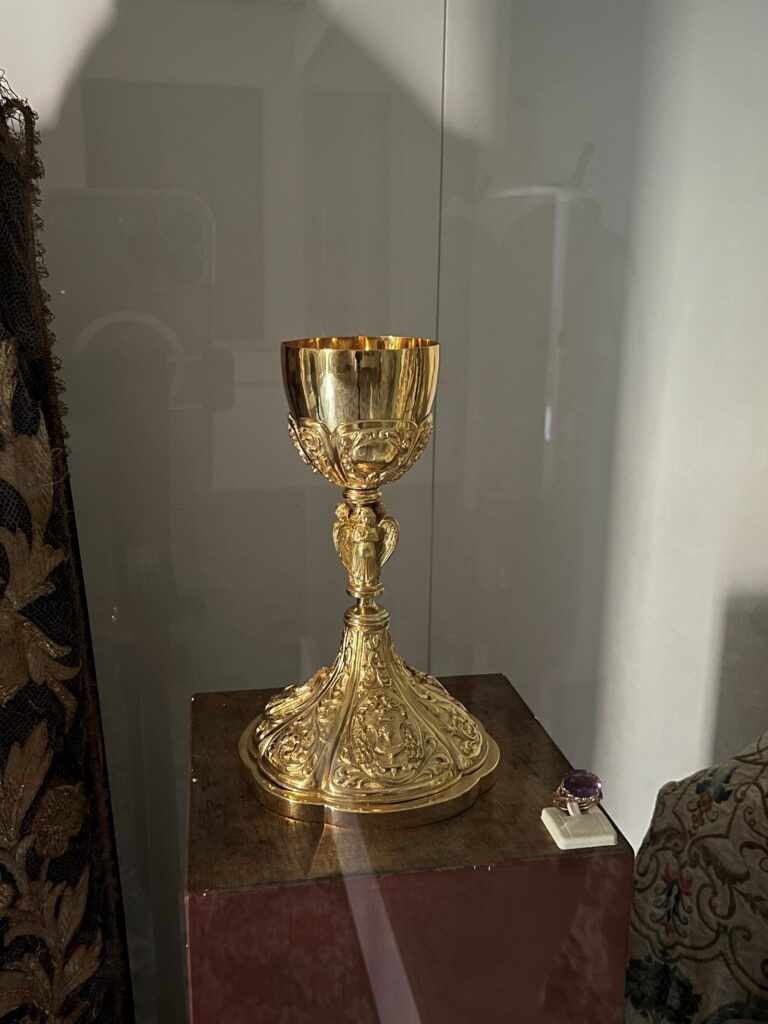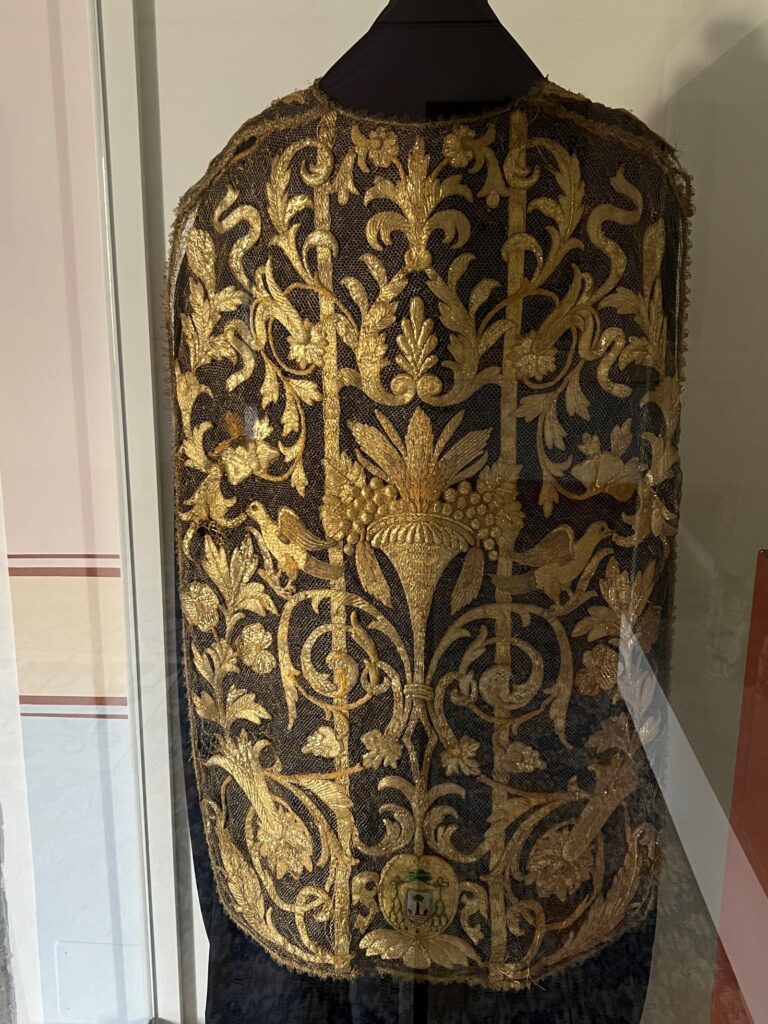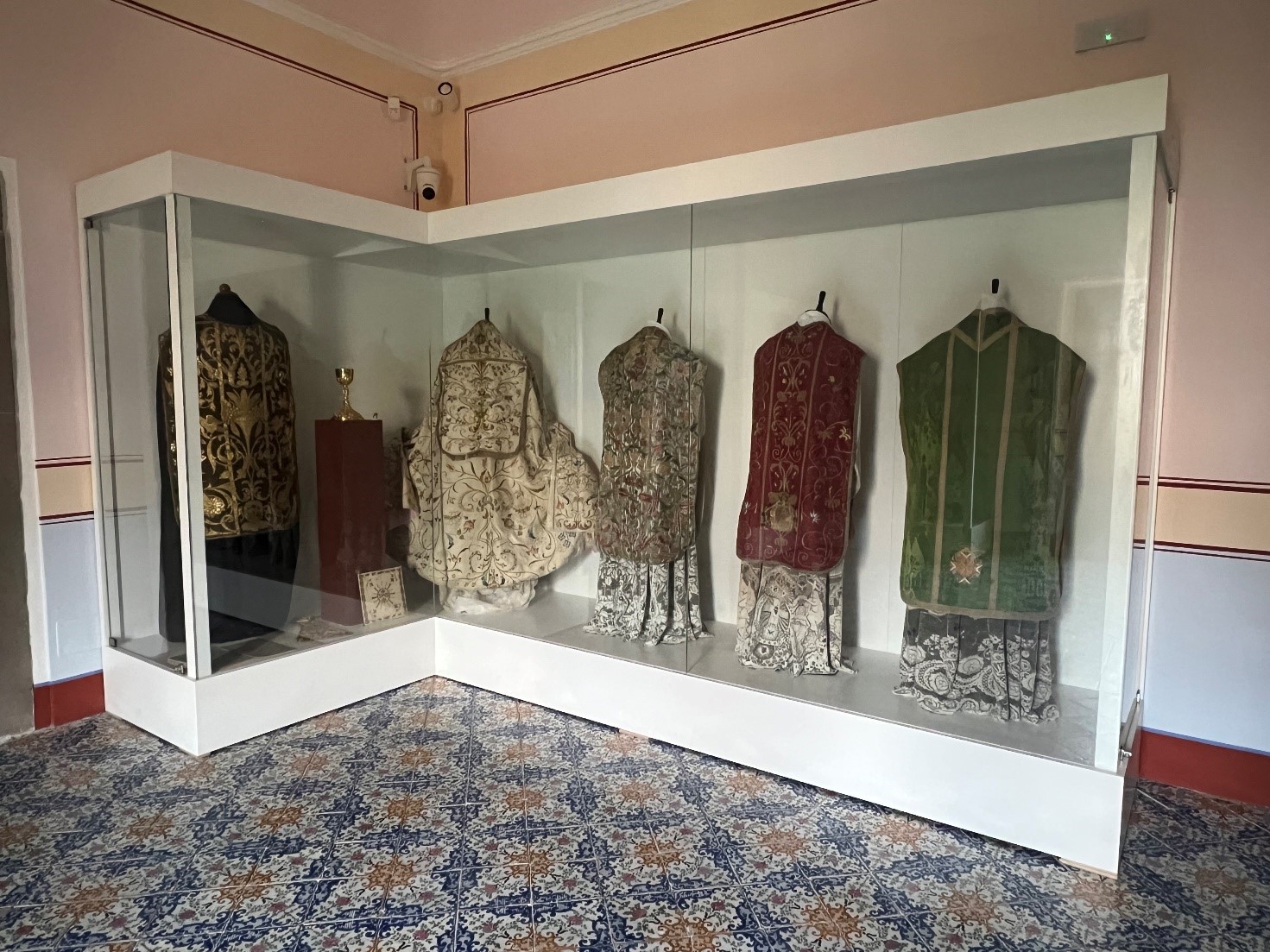(Vestments room)
The showcase contains:
20th century (early)
Monsignor Paino’s golden planet
Gold thread embroidery on gold net, coat of arms of Monsignor Angelo Paino (Bishop of Lipari from 1909 to 1921). It comes from the Parish of Maria SS. Addolorata in S. Marina Salina, where the bishop was originally from.
20th century (early)
Pastoral ring of Archbishop Angelo Paino
gold with amethyst – from the Parish of Maria SS. Addolorata in S. Marina Salina
1934
Gold chalice
Gift of the Diocese of Lipari to Monsignor Angelo Paino on the 25th anniversary of his Episcopate.
On the base in relief: Mgr Angelo Paino’s coat of arms, Our Lady of the Letter, St Bartholomew Apostle – from the sacristy of Lipari Cathedral Monsignor Angelo Paino, with a powerful intellect and a loving heart, claimed – without success – the ownership of the bishop’s refectory over the pomiciferous lands, referring to Count Ruggero’s donation. He was opposed by the Liparian political class of Masonic extraction and in 1913, perhaps also because of the climate of tension that had been created, he considered it opportune to leave Lipari. In 1923, he was appointed Archbishop of Messina, where he twice rebuilt the city and the magnificent Cathedral, endowing it with the bell tower, with its animated astronomical clock, and the grand organ, one of the largest in Europe.


18th century (end)
White cope
silk and polychrome embroidery, with delicate flowery branches and shrubs of various kinds – from the Church of the Immacolata in Lipari
17th-18th centuries
‘Marian’ Plain
silk, filigree and polychrome embroidery with delicate flowery branches and shrubs of various kinds – from the Church of the Immacolata on Lipari
18th century (early)
Monsignor Ventimiglia’s Red Planet
red silk and polychrome embroidery, coat of arms of Monsignor Girolamo Ventimiglia (Bishop of Lipari from 1695 to 1705) – from the sacristy of Lipari Cathedral
Bishop Ventimiglia, of the Theatine order, was a bishop who knew how to combine Christian charity and ambitious development projects. Of noble Palermo origins, he was famous for his oratorical skills in Rome and in many European courts, so much so that he was appointed ‘royal preacher’ by Philip IV. On the death of Pope Innocent XII in 1700, while in Rome, he was called to deliver the oration to the Cardinals gathered in Conclave for the election of the new Pope. When he arrived in Lipari, he devoted himself to the restoration and embellishment of the Cathedral, having the frescoes of the vault and the monumental high altar realised. On 20 March 1700, he also laid the foundation stone of the new Baroque Church of Madonna delle Grazie al Castello, completed in 1708.
Messina manufacture, 18th century (first quarter)
Mons. Tedeschi’s Green Planet
damask silk, silver, coat of arms of Monsignor Nicolò Maria Tedeschi (Bishop of Lipari from 1710 to 1722) – from the sacristy of Lipari Cathedral
Monsignor Nicolò Maria Tedeschi is famous for being one of the protagonists of the Liparitan Controversy. The chasuble presents an imaginative succession of architectural and naturalistic motifs with elements typical of the Far East. Due to the originality and whimsy of its design, the chasuble’s fabric is part of the ‘bizarre’ genre that became popular during the first thirty years of the 18th century in the most important textile production centres of Europe. The clergy also immediately adapted to the worldly charm of these fabrics, even if the duration of the ‘bizarre’ taste in Italy was relatively short. Our fabric would belong to the ‘exotic’ phase, which favoured vaguely architectural motifs with a fantastical setting, and would have been produced no later than the first decade of the 18th century, representing a pure example of ‘chinoiserie’, rather rare in relation to the rich harvest of more generically ‘bizarre’ fabrics found in the Messina area.



